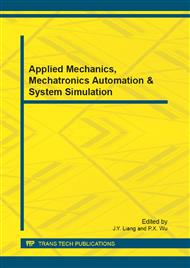[1]
Global Wind Energy Council, Global Wind Report 2009, Global Wind Energy Council, Brussels, Belgium, Tech. Apr., (2010).
Google Scholar
[2]
Zaininger H W and Bell D J. Potential dynamic impacts of wind tubines on utility systems, [J]. IEEE Trans on Power Apparatus and Systems, 1981, 100(12): 4821-4829.
DOI: 10.1109/tpas.1981.316444
Google Scholar
[3]
Schlueter R A and Park G. A modified unit commitment and generation control for utilities with large wind generation penetrations, [J]. IEEE Trans on Power Apparatus and Systems, 1985, 104(7): 1630-1636.
DOI: 10.1109/tpas.1985.319192
Google Scholar
[4]
T. S. Nielsen, A. Joensen, H. Madsen, L. Landberg, and G. Giebel, A new reference for wind power forecasting, [J], Wind Energy, vol. 1, no. 1, p.29–34, (1998).
DOI: 10.1002/(sici)1099-1824(199809)1:1<29::aid-we10>3.0.co;2-b
Google Scholar
[5]
J. Parkes and A. Tindal, Forecasting short term wind farm production in complex terrain"[C], in Proceedings of the 2004 European Wind Energy Conference, EWEC, 04, London, U.K., Nov. (2004).
Google Scholar
[6]
M. Lange and U. Focken, State-of-the-art in wind power prediction in germany and international developments, in Proceedings of the Second Workshop of International Feed-In Cooperation, Berlin, Dec. (2005).
Google Scholar
[7]
G. Kariniotakis, E. Nogaret, A. Dutton, J. Halliday, and A. Androutsos, Evaluation of advanced wind power and load forecasting methods for the optimal management of isolated power systems"[C], in Proceedings of the 1999 European Wind Energy Conference, EWEC, 99, Nice, France, Mar. 1999, p.1082.
Google Scholar
[8]
T. Ishihara, and A. Yamaguchi, T. Ogawa, K. Sakai, and Y. Fujino, An upscaling approach for the regional wind power forecasting"[C], in Proceedings of the 2007 EuropeanWind Energy Conference, EWEC, 07, Milano, Italy, May (2007).
Google Scholar
[9]
A. Yamaguchi, T. Ishihara, K. Sakai, T. Ogawa, and Y. Fujino, A physical-statistical approach for the regional power forecasting"[C], in Proceedings of the 2007 EuropeanWind Energy Conference, EWEC, 07, Milano, Italy, May (2007).
Google Scholar
[10]
G. Kariniotakis et al. Development of methods for regional wind power forecasting, March, 2008. download from http: /bib. rilk. com/3816/01/PhD_Siebert. pdf.
Google Scholar


